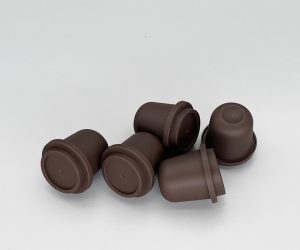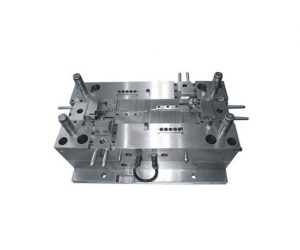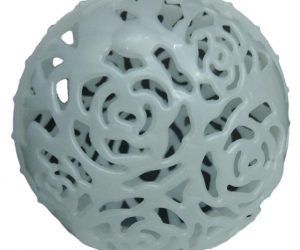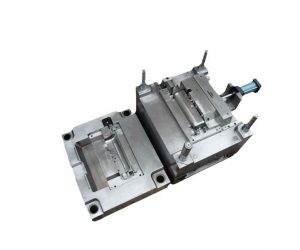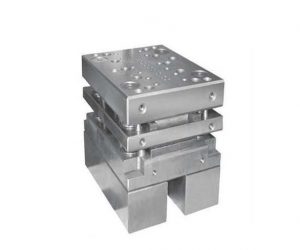Introduction to PP Injection Molding
In the realm of modern manufacturing, PP injection molding stands as a cornerstone technology with far - reaching significance. Polypropylene (PP) is a thermoplastic polymer that has gained widespread popularity due to its unique combination of properties and the versatility of the injection molding process.
The injection molding process itself is a manufacturing method where molten material, in this case, PP, is injected into a mold cavity under high pressure. Once inside the mold, the material cools and solidifies, taking on the precise shape of the mold. This process enables the mass production of highly detailed and complex parts with remarkable accuracy.
PP injection molding has become an essential part of various industries, from automotive and electronics to consumer goods and medical devices. Its importance lies in its ability to produce high - quality products efficiently, meeting the demands of large - scale production while maintaining strict quality standards.
In the following sections, we will delve deep into the PP injection molding process, explore the unique properties of PP that make it so suitable for injection molding, and examine the diverse range of applications where this technology plays a crucial role. Whether you are a novice looking to understand the basics or a seasoned professional seeking to expand your knowledge, this article will provide valuable insights into the world of PP injection molding.
The PP Injection Molding Process
Step - by - Step Process
- Feeding: The process begins with the addition of PP plastic granules into the hopper of the injection molding machine. These granules are typically made from high - quality polypropylene resin, which can be virgin or a blend with recycled materials, depending on the requirements of the final product.
- Melting: As the granules move through the heated barrel of the injection molding machine, they are gradually heated to a molten state. The barrel is equipped with heating bands that can be precisely controlled to reach the optimal melting temperature for PP, usually in the range of 160 - 275°C, depending on the grade of PP and the specific requirements of the molding process.
- Injection: Once fully molten, the plastic is injected into the closed mold cavity at high pressure. The injection is carried out by a reciprocating screw or a plunger mechanism, which forces the molten plastic through a nozzle and into the mold's intricate channels and cavities. This high - pressure injection ensures that the molten plastic fills every detail of the mold, replicating the desired shape accurately.
- Packing and Holding Pressure: After the mold is filled, a holding pressure is applied to compensate for the shrinkage that occurs as the plastic cools and solidifies. This pressure, known as the packing pressure, helps to maintain the shape and density of the final product. It is crucial for ensuring that the part has uniform thickness and minimal internal stresses.
- Cooling: During this stage, the mold is cooled, usually by circulating a coolant (such as water or a specialized heat - transfer fluid) through channels within the mold. The cooling process causes the molten PP to solidify, taking on the shape of the mold cavity. The cooling time is carefully controlled to ensure that the part is fully solidified before ejection, as premature ejection can lead to part deformation.
- Ejection: Once the part is cooled and solidified, the mold opens, and the finished product is ejected using ejector pins or other mechanical devices. The ejected part may then undergo further post - processing steps, such as trimming to remove excess material (flash), polishing for a better surface finish, or assembly with other components.
Key Process Parameters
- Temperature
- Barrel Temperature: This is critical for melting the PP granules uniformly. As mentioned, it typically ranges from 160 - 275°C. The temperature profile along the barrel may vary, with the rear section (where the granules enter) being cooler and the front section (near the nozzle) being hotter. For example, in a three - zone barrel, the rear zone might be set at around 180°C, the middle zone at 220°C, and the front zone at 250°C for a standard grade of PP.
- Nozzle Temperature: Usually set slightly lower than the front barrel temperature, around 200 - 240°C, to prevent drooling of the molten plastic when the injection cycle stops. If the nozzle temperature is too high, it can cause the plastic to leak out of the nozzle, creating a mess and potentially affecting the quality of the next injection.
- Mold Temperature: This influences the cooling rate and the final properties of the part. For PP, the mold temperature is typically in the range of 30 - 60°C. A lower mold temperature results in faster cooling, which can increase production speed but may also lead to higher internal stresses and a less - than - optimal surface finish. Higher mold temperatures, on the other hand, can improve the surface finish and reduce internal stresses but may increase cycle times.
- Pressure
- Injection Pressure: Ranges from 50 - 150 MPa, depending on factors such as the complexity of the mold, the flow length of the plastic, and the viscosity of the PP. For parts with long flow paths or complex geometries, a higher injection pressure may be required to ensure complete filling of the mold. For example, a simple, thick - walled part may only need an injection pressure of 50 - 80 MPa, while a thin - walled, intricate part could require 100 - 150 MPa.
- Packing Pressure: This is typically 50 - 80% of the injection pressure and is applied after the mold is filled to compensate for shrinkage. A proper packing pressure ensures that the part has a uniform density and minimizes voids and sink marks. For instance, if the injection pressure is 100 MPa, the packing pressure might be set at 60 - 80 MPa.
- Plasticizing Pressure (Backpressure): This is the pressure exerted on the plastic during the melting and mixing process in the barrel. It helps to improve the homogeneity of the molten plastic, mix in additives (such as colorants or fillers) more effectively, and remove any trapped air. The plasticizing pressure for PP usually ranges from 5 - 20 MPa.
- Time
- Injection Time: Usually lasts from a few seconds to around 10 - 15 seconds, depending on the size and complexity of the part. Small, simple parts may have an injection time of 2 - 5 seconds, while larger, more complex parts could take 8 - 15 seconds.
- Packing Time: This is the duration for which the packing pressure is applied and typically ranges from 5 - 30 seconds. It is crucial for ensuring proper density and dimensional stability of the part.
- Cooling Time: This is the longest part of the cycle and can range from 10 - 60 seconds or more, depending on the thickness of the part and the mold temperature. Thicker parts require longer cooling times to ensure complete solidification. For example, a thin - walled part might have a cooling time of 10 - 20 seconds, while a thick - walled part could need 30 - 60 seconds.
Properties of PP in Injection Molding
Mechanical Properties
- Tensile Strength
- The tensile strength of injection - molded PP typically ranges from 20 - 40 MPa for general - purpose grades. However, with the addition of fillers or through specific copolymerization techniques, this value can be enhanced. For example, glass - fiber - reinforced PP can have a tensile strength of up to 100 MPa or more. This property is crucial in applications where the part needs to withstand pulling or stretching forces. In automotive interior components like door panels, a certain level of tensile strength is required to ensure that the parts do not deform or break under normal usage conditions, such as when the door is opened or closed forcefully.
- Flexural Strength
- PP has a relatively good flexural strength, usually in the range of 30 - 60 MPa for standard grades. Its excellent flexural fatigue resistance, often referred to as “hundred - fold bending resistance” or “hundred - fold flexing resistance” (it can be bent up to 10^6 times at room temperature without damage), makes it an ideal choice for applications that involve repeated bending. For instance, in the manufacturing of hinges for plastic containers or snap - fit components in consumer electronics, the ability of PP to endure repeated flexing is highly valued. These components need to open and close multiple times over their lifespan, and PP's flexural properties ensure their long - term functionality.
- Impact Strength
- The impact strength of PP varies depending on its type. Homopolymer PP has a relatively low impact strength at room temperature, around 5 - 10 kJ/m² in the notched Izod test. But copolymer PP, especially those with a higher ethylene content, can have an impact strength of up to 60 kJ/m² or more. In applications where parts may be subject to sudden impacts, such as in outdoor furniture or children's toys, copolymer PP with enhanced impact resistance is often preferred. These products need to withstand accidental drops or collisions without shattering, and the improved impact strength of copolymer PP meets this requirement.
Physical Properties
- Density
- PP has a density of approximately 0.90 - 0.91 g/cm³, which is one of the lowest among common plastics. This low density makes it a lightweight material, which is highly beneficial in applications where weight reduction is a key factor. For example, in the packaging industry, using PP can significantly reduce the weight of packaging materials, leading to lower transportation costs. In the automotive industry, lightweight PP components help to improve fuel efficiency by reducing the overall weight of the vehicle.
- Shrinkage
- The shrinkage rate of injection - molded PP is relatively high, typically in the range of 1% - 2.5%. This high shrinkage must be carefully considered during the mold design stage. In the production of large - scale plastic parts like storage containers or automotive bumpers, the shrinkage can cause dimensional inaccuracies if not compensated for. Mold designers often use techniques such as over - sizing the mold cavity slightly or adjusting the processing parameters to minimize the effects of shrinkage and ensure that the final product meets the required dimensional tolerances.
- Heat Resistance
- PP has good heat resistance compared to some other common plastics. It can withstand continuous use temperatures of up to 110 - 120°C. In applications such as food containers that may be exposed to hot liquids or in the manufacturing of components for household appliances that generate heat, this heat - resistant property of PP is essential. For example, a PP - made coffee cup lid can maintain its shape and integrity when in contact with hot coffee, and PP components in a hairdryer can function properly at elevated temperatures.
- Chemical Resistance
- PP is highly resistant to a wide range of chemicals. It is not easily corroded by most acids, alkalis, and organic solvents, except for strong oxidizing agents like concentrated sulfuric acid and concentrated nitric acid. This chemical resistance makes it suitable for use in chemical storage containers, pipes for transporting corrosive fluids in industrial settings, and components in the pharmaceutical and cosmetic industries where contact with various chemicals is common. For example, PP pipes are often used in chemical plants to transport acids and alkalis due to their excellent chemical stability.
Diverse Applications of PP Injection Molding
In the Automotive Industry
PP injection molding has found extensive applications in the automotive industry, both in interior and exterior components.
Interior Components: For automotive interior parts such as dashboards, seats, and door panels, PP is a popular choice. Dashboards made from PP injection molding offer a good balance of cost - effectiveness, lightweight properties, and design flexibility. They can be easily molded into complex shapes to meet the ergonomic and aesthetic requirements of modern vehicles. Seats often use PP for their structural components, such as seat frames and backrests. PP's relatively high strength - to - weight ratio ensures that the seats are both durable and lightweight, contributing to better fuel efficiency. Door panels made of PP can house various features like armrests, storage compartments, and speaker grilles. The material's ability to be injection - molded into intricate designs allows for seamless integration of these components.
Exterior Components: In exterior applications, PP is used for parts like bumpers and headlight housings. Bumpers made from PP are lightweight, which helps in reducing the overall weight of the vehicle. They also have good impact resistance, especially when modified with additives. PP's chemical resistance is beneficial as bumpers are exposed to various environmental elements such as water, road salts, and chemicals from vehicle fluids. Headlight housings made of PP need to have good heat resistance to withstand the heat generated by the bulbs. PP's ability to maintain its shape and integrity at elevated temperatures, along with its relatively low cost, makes it a suitable material for this application.
In Consumer Electronics
The consumer electronics industry also heavily relies on PP injection molding.
Mobile Phone and Computer Components: Mobile phone cases made from PP offer protection to the device while being lightweight and cost - effective. PP can be easily colored and textured during the injection - molding process, allowing for a wide range of design options to meet consumer preferences. Computer cases, especially for laptops and some desktop models, often use PP for their outer shells. PP's dimensional stability ensures that the computer components are well - protected and that the case maintains its shape over time. It also has good insulating properties, which are important for preventing electrical interference. Charger shells made of PP are designed to be compact and durable. The material's ability to withstand the heat generated during the charging process and its resistance to wear and tear make it an ideal choice for these small but essential components.
In Daily - Use Products
PP injection molding is ubiquitous in the production of daily - use products.
Plastic Tableware: PP is widely used in plastic tableware such as plates, bowls, and utensils. It is non - toxic, making it safe for food contact. PP tableware is lightweight, easy to clean, and often dishwasher - safe. Its cost - effectiveness allows for mass production, making it an affordable option for households, restaurants, and food - service establishments.
Toys: In the toy industry, PP is a common material. It is lightweight, which is important for toys that are meant to be handled by children. PP's good impact resistance ensures that toys can withstand rough handling and accidental drops. It can also be easily molded into various shapes and colors, making it suitable for creating a wide variety of toys, from action figures to building blocks.
Household Goods: Household items like storage containers, clothes hangers, and bathroom accessories are often made using PP injection molding. Storage containers made of PP are durable, have good sealing properties to keep food fresh, and are available in different sizes and shapes. Clothes hangers made from PP are lightweight, rust - free, and can be designed with features like notches to hold clothes in place. Bathroom accessories such as soap dispensers, toothbrush holders, and shower caddies made of PP are resistant to moisture and chemicals found in bathroom products, ensuring a long service life.
Yigu Technology's Perspective
As a non - standard plastic metal products custom Supplier, Yigu Technology highly values PP injection molding. The lightweight and cost - effective nature of PP makes it an ideal choice for custom - made products. In the customization process, we take full advantage of PP's good chemical resistance. For example, when manufacturing custom - designed chemical containers, PP's resistance to a wide range of chemicals ensures the durability and safety of the products.
However, challenges do exist. The high shrinkage rate of PP can pose difficulties in achieving precise dimensional accuracy for non - standard parts. To address this, our team of experts carefully calculates and adjusts the mold design. We also optimize the injection molding process parameters, such as adjusting the cooling rate to minimize the impact of shrinkage. By continuously innovating and improving our techniques, we strive to provide high - quality custom - made products that meet the diverse needs of our customers in various industries.
FAQ about PP Injection Molding
How to choose the right PP material for injection molding?
- Performance Requirements: Consider the mechanical, physical, and chemical properties needed for the final product. For example, if the part requires high tensile strength, choose a high - strength grade of PP or a glass - fiber - reinforced PP. If it needs to resist chemicals, ensure the PP has good chemical resistance.
- Processing Characteristics: Different grades of PP have different melt flow rates (MFR). A higher MFR means the material is more fluid and easier to inject, which is suitable for complex - shaped parts or thin - walled products. However, a lower MFR may be better for parts that require high strength.
- Cost - effectiveness: Compare the costs of different PP grades. While high - performance grades may offer better properties, they may also be more expensive. Sometimes, a blend of virgin and recycled PP can be a cost - effective option without sacrificing too much on performance, especially for non - critical applications.
Can PP injection molding be used for complex - shaped products?
Yes, PP injection molding is highly suitable for complex - shaped products. Firstly, the mold design in PP injection molding allows for great flexibility. Mold designers can create intricate cavities and cores to replicate the complex shapes. Secondly, the molten PP has good fluidity when heated to the appropriate temperature. This enables it to flow easily into all the nooks and crannies of the mold cavity, filling the complex geometry accurately. For example, in the production of small, detailed components with multiple undercuts or fine features, PP injection molding can achieve high - quality results with precise replication of the design, making it an ideal choice for complex - shaped product manufacturing.

